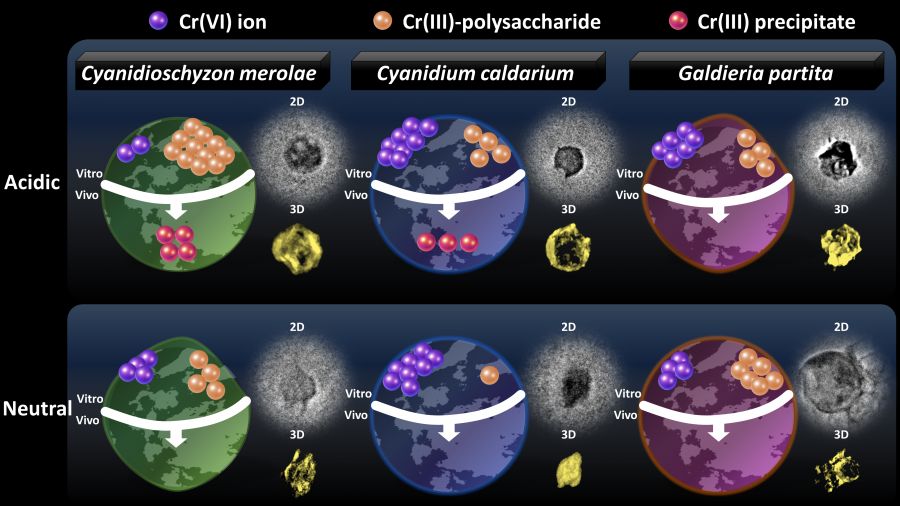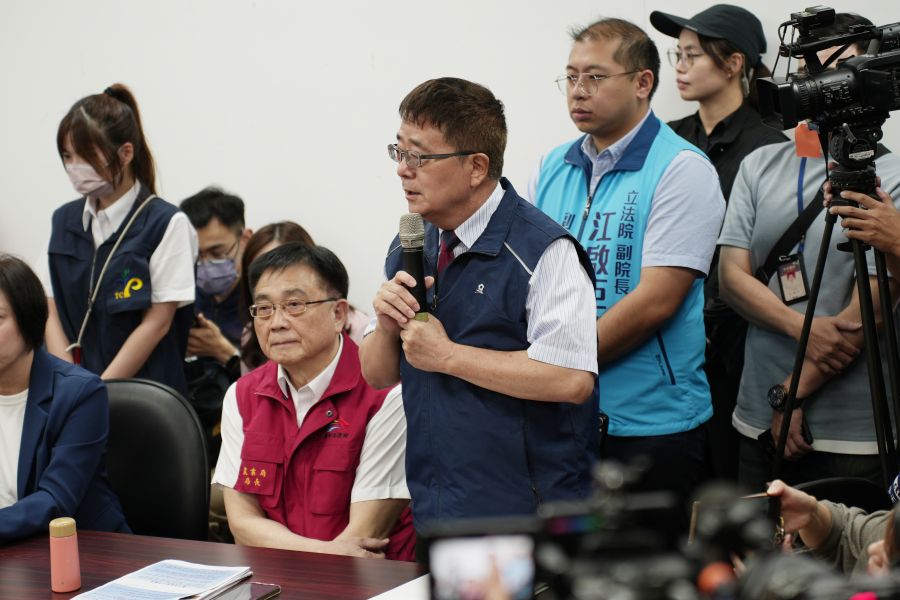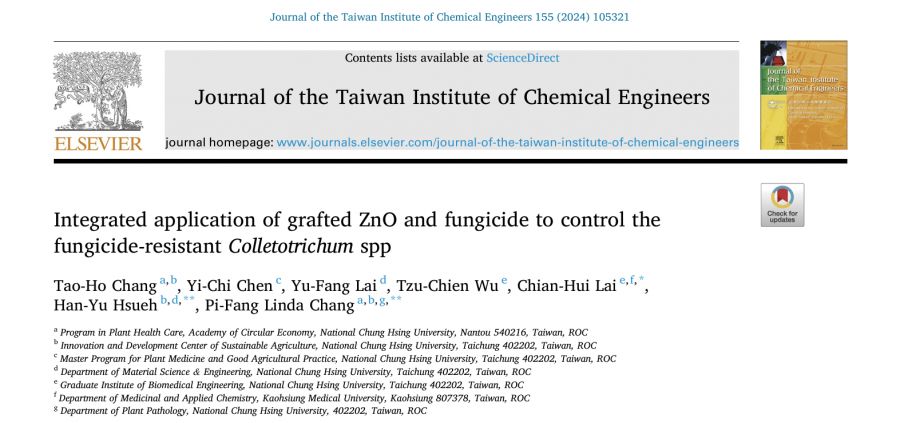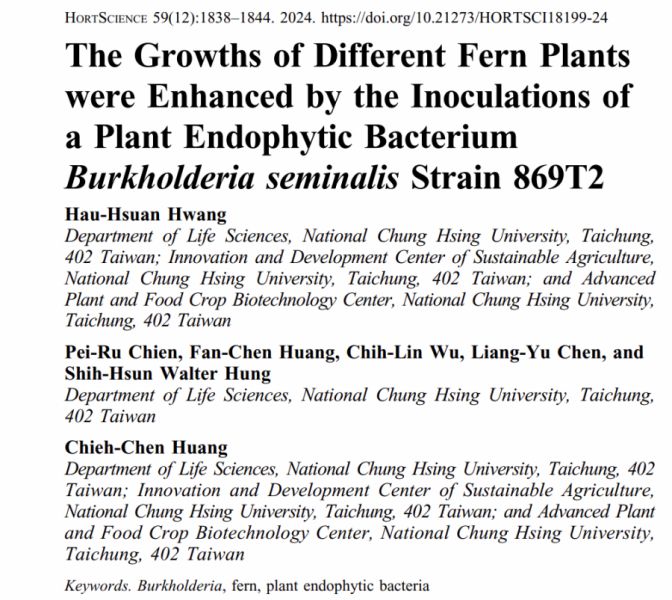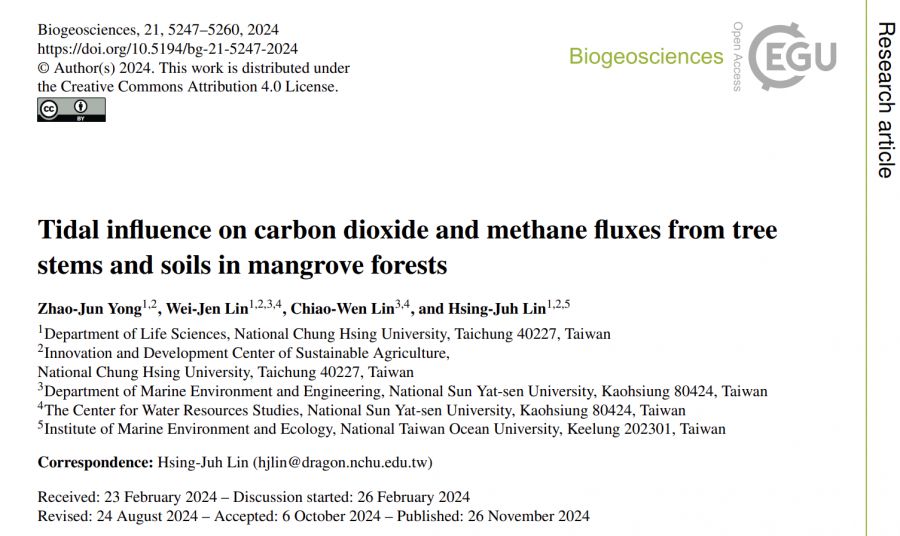生態農業:土壤碳蓄存之預測模型優化及驗證【土壤環境科學系/鄒裕民特聘教授、劉雨庭特聘教授】
| 論文篇名 | 英文:Removal and concurrent reduction of Cr(VI) by thermoacidophilic Cyanidiales: a novel extreme biomaterial enlightened for acidic and neutral conditions 中文:嗜高溫酸性紅藻對Cr(VI)的去除和同時還原:一種適用於酸性和中性環境之新型生物材料 |
| 期刊名稱 | Journal of Hazardous Materials |
| 發表年份,卷數,起迄頁數 | 2023. 445:130334 |
| 作者 | Cho, Yen -Lin; Tzou, Yu-Min(鄒裕民); Wang, Chun-Chieh; Lee, Yao-Chang; Hsu, Liang-Ching; Liu, Shao-Lun; Assakinah, Afifah; Chen, Yu-Hsien; Than, Nhu Anh Thi; Liu, Yu-Ting(劉雨庭)*; Rinklebe, Joerg |
| DOI | 10.1016/j.jhazmat.2022.130334 |
| 中文摘要 | 嗜高溫酸性紅藻在富含金屬的極端環境中具有競爭優勢。Cyanidioschyzon merolae(Cm),Cyanidium caldarium(Cc)和Galdieria partita(Gp)的Cyanidiales物種被利用來去除六價鉻[Cr(VI)]。在pH值為2.0和7.0時,Cm和Gp可以分別去除168.1和93.7毫克/克的Cr(VI),其中Cm和Gp上吸附的Cr的89%和62%分別為三價鉻[Cr(III)]。除了表面吸附的Cr(VI)外,體外Cr(III)與多醣結合,體內的氫氧化鉻(III) [Cr(OH)3] 也證明了Cyanidiales的還原能力。Cr物種的分佈隨著吸附的Cr量的變化而變化,但只有在pH值為2.0的Cm和Cc上,無論Cr吸附容量如何,發現了相對一致比例的Cr(OH)3。與TXM(透射X射線顯微術)圖像結合,顯示pH值為2.0的Cm和Cc上細胞完整性較少受損,可能的細胞內Cr分佈,體內的Cr(OH)3可能是促進Cr吸附容量(≥ 152毫克/克)的關鍵。Cyanidiales由於其出色的去除能力、氧化條件下的自發性還原和體內積累,是綠色和可持續去除Cr(VI)的有望候選者。 |
| 英文摘要 | Thermoacidophilic Cyanidiales maintain a competitive edge in inhabiting extreme environments enriched with metals. Here, species of Cyanidioschyzon merolae (Cm), Cyanidium caldarium (Cc), and Galdieria partita (Gp) were exploited to remove hexavalent chromium [Cr(VI)]. Cm and Gp could remove 168.1 and 93.7 mg g-1 of Cr(VI) at pH 2.0 and 7.0, respectively, wherein 89% and 62% of sorbed Cr on Cm and Gp occurred as trivalent chromium [Cr(III)]. Apart from surface-sorbed Cr(VI), the in vitro Cr(III) bound with polysaccharide and in vivo chromium(III) hydroxide [Cr(OH)3] attested to the reduction capability of Cyanidiales. The distribution of Cr species varied as a function of sorbed Cr amount, yet a relatively consistent proportion of Cr(OH)3, irrespective of Cr sorption capacity, was found only on Cm and Cc at pH 2.0. In conjunction with TXM (transmission X-ray microscopy) images that showed less impaired cell integrity and possible intracellular Cr distribution on Cm and Cc at pH 2.0, the in vivo Cr(OH)3 might be the key to promoting the Cr sorption capacity (≥ 152 mg g-1). Cyanidiales are promising candidates for the green and sustainable remediation of Cr(VI) due to their great removal capacity, the spontaneous reduction under oxic conditions, and in vivo accumulation. |
| 發表成果與本中心研究主題相關性 | 雖然這項研究的主要焦點是水質中Cr(VI)的處理,但它仍然具有與永續農業相關的環境和資源效益方面的重要潛在影響,包括環境保護、資源有效利用、土壤健康、生態系統保護等。 |

